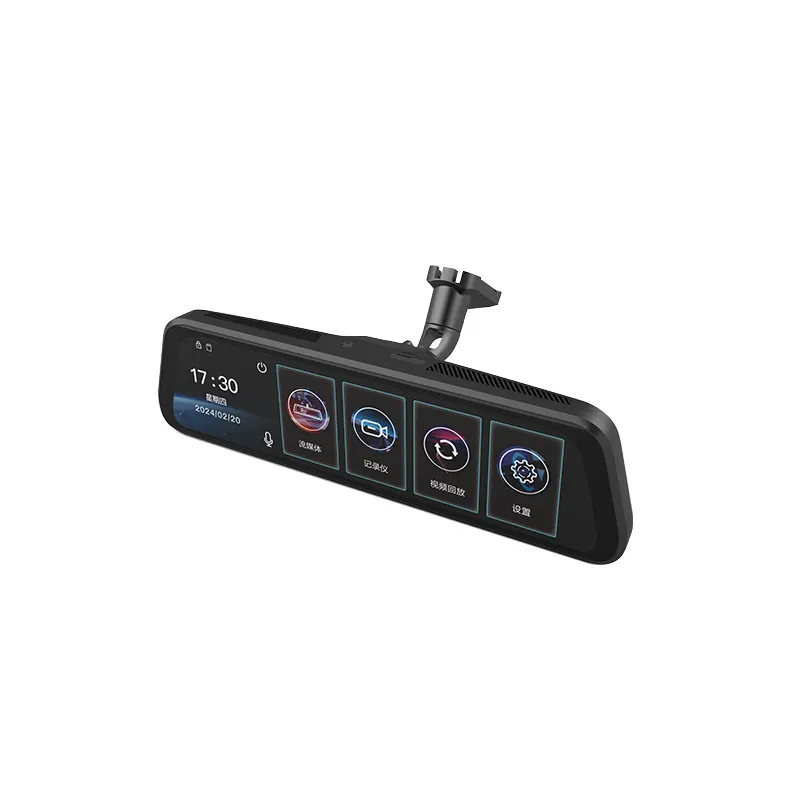Understanding Streaming Mirroring Fundamentals
Core Technology Behind Streaming Mirroring
Mirroring tech for streaming has become pretty important these days when devices need to talk to each other smoothly. Most systems work through stuff like Miracast or Apple's AirPlay. What these do basically is copy what appears on one screen onto another right away, which matters a lot for things like watching videos or getting directions while traveling. The way it works depends mostly on either Wi-Fi Direct links or regular home networks. How well it performs really comes down to how strong the internet connection is at any given moment. Some tests have found that good quality gear can keep lag super low too. We're talking about delays usually staying below 100 milliseconds most of the time. That kind of quick response makes all the difference in cars where drivers need to see information fast. Think about those backup cameras showing up in side mirrors or smart dashboards displaying traffic alerts. With this tech around, drivers get their visual info almost instantly without having to look away from the road for long periods.
Key Benefits for Everyday Users
Streaming mirroring makes life easier because it lets people send stuff from phones to bigger screens without any hassle. People love watching shows, playing games, and using apps on those massive TV screens instead of dealing with all those annoying wires and connectors. And this isn't just about sitting at home anymore either. Car manufacturers have started putting mirroring tech right into dashboards too. Navigation maps appear directly on the windshield display while backup cameras show up on center screens when reversing. According to some industry reports, roughly 7 out of 10 drivers actually say they drive better with these mirrored features available inside their cars. What really matters though is how simple everything becomes for regular folks who want to enjoy media anywhere they go without getting tangled up in technology.
Critical Selection Criteria for Mirroring Devices
Compatibility with Your Ecosystem
Picking out a mirroring device gets complicated fast if we don't check how well it plays with what's already in our tech setup. Most folks forget about this until they try connecting everything together and run into problems. Think about whether the device will actually work with those old smartphones, tablets sitting around, or even that TV from last year. Compatibility matters because systems like iOS and Android handle things differently behind the scenes. Some devices manage to bridge these gaps pretty well though, letting people switch back and forth between gadgets without constant frustration. People who take time to match their new gear with existing equipment tend to have fewer headaches down the road. They spend less time figuring out why something isn't working and more time enjoying their entertainment or presentations across all their screens.
Performance Metrics That Matter
How well a mirroring device performs really affects what users experience day to day. Resolution matters a lot these days, most devices go from standard 1080p all the way up to 4K now. The higher end models just look so much clearer on screen. Then there's latency issues too many people don't think about. That's basically how long it takes between when something happens and when it shows up on the display. For things like playing games or using maps while driving, low latency makes all the difference between smooth operation and annoying lag times. Connection strength and how fast data moves through also play big roles here. Anything below 30 Mbps usually means choppy video at best. Looking at real world test results helps folks pick out good performing gear. Making smart choices based on actual performance specs leads to much better overall streaming and mirroring experiences in practice.

Exploring Types of Streaming Mirroring Hardware
When diving into the world of streaming mirroring hardware, there are several options. Here's a closer look at two prevalent types.
Dedicated Streaming Sticks and Dongles
Take Chromecast and Amazon Fire Stick for instance these little gadgets represent what we now call streaming sticks and dongles that just keep getting more popular every day. Small enough to fit anywhere, they let people simply plug into their TV and start watching all sorts of stuff from different platforms. Most folks love how cheap they are compared to other options and just how straightforward the whole setup process is. Looking at recent numbers tells us something interesting too sales figures show around 25 percent annual growth in this category, pointing clearly to growing interest among consumers who want convenient ways to stream their favorite shows and movies right on big screens.
Automotive-Focused Mirroring Solutions
The automotive tech world has seen some major improvements thanks to specialized mirroring solutions. We're talking about things like wireless backup cameras and newer gadgets that go beyond just keeping drivers entertained while making roads safer too. Many of these modern setups come with built-in dashcams and screen mirroring features that help drivers stay aware of what's happening around them. Research suggests that cars equipped with these kinds of systems tend to get into fewer accidents overall. Still worth noting though, before jumping on the bandwagon, people need to check if these new technologies will actually work with their current car's dashboard and GPS setup. Compatibility issues can be frustrating when trying to install all this fancy equipment.
Making Your Optimal Device Choice
Matching Needs to Device Capabilities
Picking out the right mirroring device starts with matching what we actually need against what the device can do. First thing to check is whether someone mainly wants something for home entertainment purposes or maybe for car use instead. Getting clear on this basic point cuts through all the noise and leaves fewer choices to worry about. Take streaming videos, playing games, or giving presentations as examples. People who go for devices specifically built for these tasks tend to have better results overall. Looking at reviews from actual users shows that folks get much happier when they find a device that fits exactly what they need. And don't forget personal taste matters too. A good choice should work well for individual situations rather than just being technically impressive but impractical for daily life.
Future-Proofing Your Investment
Putting money into tech that stands the test of time really pays off in the long run when it comes to getting good use out of our gadgets. Look for devices that come with regular firmware updates and new features added down the road because these things actually keep up with what we need now and what might come next, like supporting those ever increasing screen resolutions everyone keeps talking about. The fact that something can evolve means we don't have to replace it so often. Most tech experts will tell us to check what's trending right now and read through what other people are saying online before making a purchase decision. People who pick their gear with an eye toward the future tend to save more money overall throughout how long they own the device. That makes sense when we think about all the hassle and expense of constantly buying new stuff just because old stuff becomes outdated too fast.
FAQ
What is streaming mirroring technology?
Streaming mirroring technology uses protocols like Miracast and AirPlay to enable real-time display replication over Wi-Fi Direct or home networks, facilitating seamless communication between devices.
How does streaming mirroring technology enhance automotive applications?
This technology supports real-time visuals essential for functions like rear-view camera displays and smart dashboards, crucial for enhancing safety and navigation in vehicles.
What should I consider when selecting a mirroring device?
Consider compatibility with your existing devices, performance metrics such as resolution and latency, and device capabilities that align with your specific needs for entertainment or automotive use.
Why is future-proofing important when choosing mirroring devices?
Future-proof devices adapt to evolving technological standards, offering firmware updates and feature enhancements to ensure longevity and higher returns on your investment.




